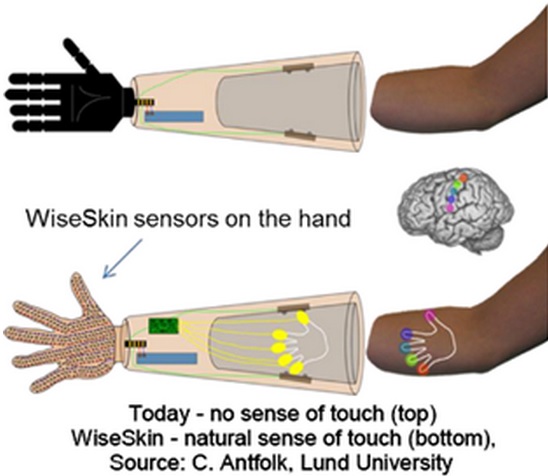
Background
Amputation of a hand or limb is a catastrophic event resulting in significant disability with major consequences for amputees in terms of daily activities and quality of life. Although functional myoelectric prostheses are available today, their use remains limited due, in part, to a lack of sensory function in the prostheses. At the same time, as the world’s population both grows and ages, the number of people living with disabilities, such as persons who have lost limbs for various reasons also increases. A sense of tactility is needed for providing feedback for control of prosthetic limbs and to perceive the prosthesis as a real part of the body, inducing a sense of “body ownership”. Today, there is no solution for restoration of a natural sense of touch for persons using prosthetic limbs.
Objectives
WiseSkin provides a solution for restoration of the sensation of touch. It embeds tactility sensors into the cosmetic silicone coating of prostheses, which acts like a sensory “skin” providing the sensation of touch, enabling improved gripping, manipulation of objects and mobility (walking) for amputees. Flexibility, freedom of movement and comfort demand unobtrusive, highly miniaturized, ultra-low power (ULP) sensing capabilities built into the “skin”, which is then integrated with a sensory feedback system. The focus is on non-invasive sensory feedback mechanisms.